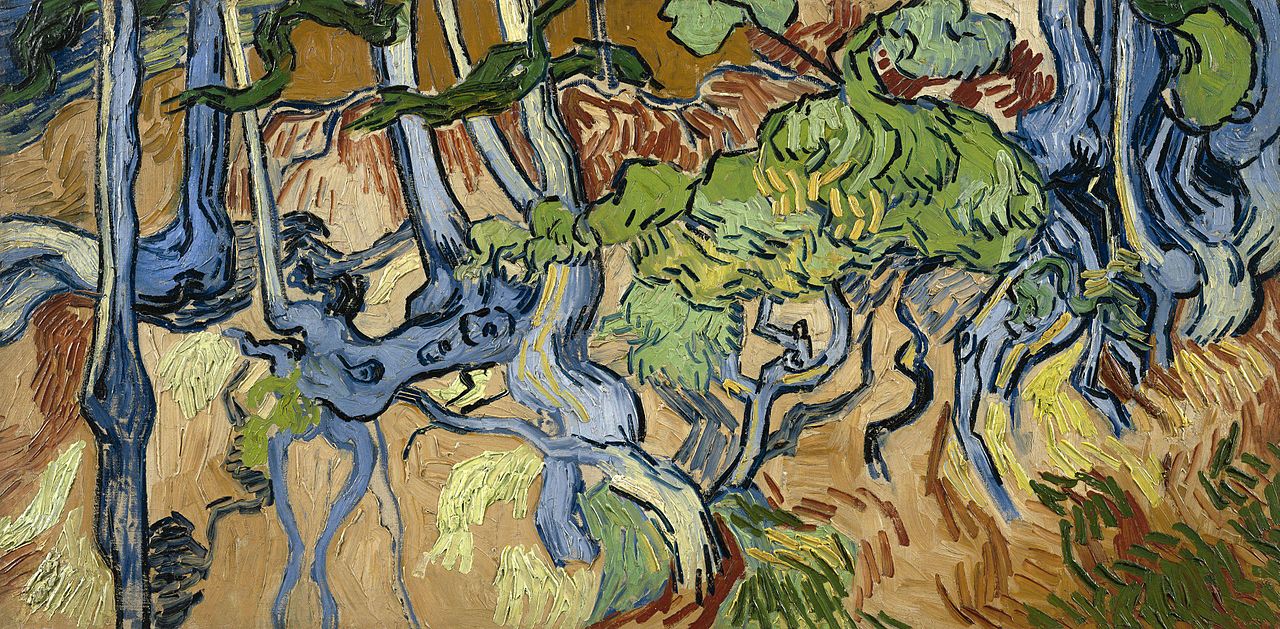The story of Vincent van Gogh’s life tends to be defined by his psychological condition and the not-unrelated manner of his death. (It does if we set aside the episode with the mutilated ear and the brothel, anyway.) The figure of the impoverished, neglected artist whose work would revolutionize his medium, and whose descent into madness ultimately drove him to take his own life, has proven irresistible to modern storytellers. That group includes painter-filmmaker Julian Schnabel, who told Van Gogh’s story a few years ago with At Eternity’s Gate, and Vincente Minnelli, who’d earlier given it the full CinemaScope treatment in 1956 with Lust for Life.
It is thanks in large part to Lust for Life that casual Van Gogh fans long regarded Wheatfield with Crows as his final painting. “The painting’s dark and gloomy subject matter seemed to perfectly encapsulate the last days of Van Gogh, full of foreboding of his eventual death,” says gallerist-Youtuber James Payne in his new Great Art Explained video above.
Recently, however, the consensus has shifted toward a different, lesser-known work, Tree Roots. Like Wheatfield with Crows, Van Gogh painted it in the rural village of Auvers-sur-Oise, to which he moved after checking out of the last asylum in which he’d received treatment. There, in his final weeks, he “worked on a series of landscapes on the hills above Auvers,” all rendered on wide-format canvases he’d never used before.

That this series consists of “vast expanses, totally devoid of any human figures” makes it look “as if he has given up on humanity.” What’s more, Tree Roots is also “devoid of form. It is unfinished, which is extremely unusual for Van Gogh, and a sign it was still being worked on when he died.” Its obscure location only became clear during the time of COVID-19, when Van Gogh specialist Wouter van der Veen was looking through a cache of old French postcards he’d received and happened to spot a highly familiar set of roots. Thanks to this coincidence, we can now visit the very spot in which Van Gogh painted what’s now thought to be his very last work on the morning of July 27th, 1890, the same day he chose to end his own life. This counts as a mystery solved, but surely the art Van Gogh made during his abbreviated but prodigious career still has much to reveal to us.
Related content:
1,500 Paintings & Drawings by Vincent van Gogh Have Been Digitized & Put Online
Vincent van Gogh’s The Starry Night: Why It’s a Great Painting in 15 Minutes
Vincent van Gogh’s Self Portraits: Explore & Download a Collection of 17 Paintings Free Online
Van Gogh’s Ugliest Masterpiece: A Break Down of His Late, Great Painting, The Night Café (1888)
Based in Seoul, Colin Marshall writes and broadcasts on cities, language, and culture. His projects include the Substack newsletter Books on Cities, the book The Stateless City: a Walk through 21st-Century Los Angeles and the video series The City in Cinema. Follow him on Twitter at @colinmarshall or on Facebook.


It’s not just “seeing” a Van Gogh site.
My daughter and I were driving somewhere between Arles and St. Remy. Very windy day. And I suddenly told her “quick, take a picture of those trees!”.
It was a row of cypress. In the wind they were twisting and churning as if being tortured. That is the emotion I now perceive in the cypress painting.